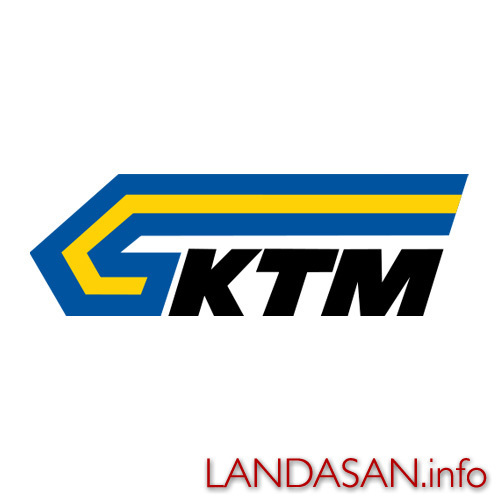
Kit Siang’s attitude (via a post published on his official blog) towards Malaysian Electrified Double Tracking Project (EDTP) is skeptical. According to the post, it is not justifiable to spend about RM 9 billion on the project simply because our trains run on meter gauge rails and cannot move as fast as the ones on standard gauge rails.
His argument on inability of trains to move fast along meter gauge is flawed. He might forget about the terrain nature of Malaysia which prohibits the usage of standard gauge rails, especially around hilly areas. He might also overlooked the fact that turning the whole inter-city railroad service from narrow gauge to standard gauge is extremely expensive, especially this will also include the exorbitant cost of modifying, if not replacing our current narrow-gauge rolling stock.
He might also forget the fact that our trains also run through the border to Thailand, which also uses meter gauge. Changing to standard gauge will adversely affect our freight services, which accounts a significant portion of revenue to our national railway company, Keretapi Tanah Melayu Berhad (KTMB) [2]. Of note, meter gauge has been here for a long time and it is a de facto standard for Southeast Asia railway network. Decision to change our railroad system (which is currently connected to neighboring countries) cannot be made single-handedly. Easier said than done.
The standard-gauge-run Acela Express, the only high-speed train service in the United States has an awesome top speed, which stands at 240 km/h. However, its average speed is only at 110 km/h due to local regulations in some stretches of its route and also due to geographical and infrastructure limitations. High speed trains are possible if the railroads are made away from general population due to high noise produced. Given our current layout, which often crosses cities and villages, it is not feasible to have such a high speed rail network as an alternative to EDTP.
Malaysia is paving its way towards better railroad service. With the introduction of double-tracked railway between Ipoh and Kuala Lumpur, a new KTM service called ETS (Electric Train Services) was introduced, offering a premium service with comfy fleet of trains with various amenities. The service might not be as perfect as the ones offered in some other countries but we need to be aware that we are paving our way towards betterment. ETS has top speed of 140 km/h and offers only two-hour journey between Kuala Lumpur and Ipoh (non-stop). This is actually faster than cars (did I mention it is safer?).
Let us not forget that we HAVE ALREADY BEEN USING STANDARD GAUGE in our newer rail systems, such as LRT (both Ampang and Kelana Jaya Line) and KLIA Ekspres. The reason why we stick to meter gauge for inter-city rail system is due to the integration of our freight and passenger services to neighboring countries. Therefore, we can see that the current administration is able to realize the benefits of having standard gauge railways for speed and stability.
The EDTP project might have its flaws but by simply complaining without even care to seek solution is worse. Reading their comments about. This is most probably not written by Kit Siang but I write this response because the post resembles his viewpoint, unless he states otherwise. The current government is not perfect at all but that does not indicate everything they are doing is wrong. Consider doing some homework before complaining (and not giving specific solutions).
Footnotes
- Inter-city rail service in Malaysia uses 1-meter long narrow gauge while most other parts in the world
- KTM Berhad depends a lot on freight services to ensure its sustainability in business. KTM Intercity service is best known for their extremely cheap rates. This does not simply happen because KTM is generous. It is a company. It spends money on maintaining trains and stations and it needs every cent of them, be it from government’s initiative or fare collection from its users. Since the fare system barely gives them profit, they need KTM Freight to survive.




